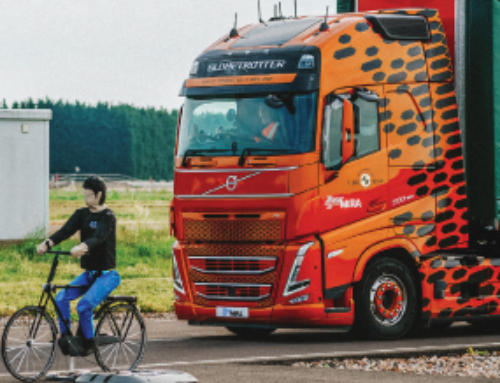Driver shortages reported across Europe
 A shortage of drivers is preventing more than half of European truck operators from expanding their business, according to a report from trade body the International Road Transport Union (IRU).
A shortage of drivers is preventing more than half of European truck operators from expanding their business, according to a report from trade body the International Road Transport Union (IRU).
The Europe Truck Driver Shortage Report surveyed over 1,000 operators in the EU, UK and Norway, and found a shortfall of over 233,000 drivers. By 2028, this is expected to rise to over 745,000 as active drivers retire.
The European truck driver profession has an ageing population with an average age of 47. One-third of truck drivers are over 55 and expected to retire in the next ten years, while less than 5 per cent are below 25 years of age.
Shortages are less apparent in the UK than elsewhere: just one per cent of positions are unfilled, with 2,000 empty drivers’ seats. In contrast most of our near neighbours have shortages in the order of seven per cent.
According to IRU, over half of operators are providing performance rewards and increasing salaries to better retain and attract drivers. In Europe, on average, the gross salary of a truck driver is 55 per cent higher than the national minimum wage, reaching as high as 133 per cent in the Netherlands.
Other measures being implemented by operators include investing in better vehicles (44 per cent), covering costs to access the profession (35 per cent) and providing upskilling opportunities (25 per cent).
The high cost of obtaining a truck driving licence and professional qualifications in Europe, which is on average 3.7 times greater than the average monthly minimum wage, constitutes a significant barrier to attracting people to the profession, the organisation added, especially young people.
IRU director of EU advocacy, Raluca Marian said: “IRU’s latest European truck driver shortage report clearly demonstrates that road freight companies, and consequently EU trade, are being impaired by the shortage of drivers. It’s also clear that companies are doing everything they can to attract and retain more drivers.
“While the causes behind the shortage of drivers are diverse, the EU and governments must play their role in eliminating barriers to entry and supporting more attractive working conditions.
“Regarding barriers, for example, the ‘school-to-wheel gap’ should be closed by allowing 17-year-olds to gain driving experience alongside a driver-trainer, and the recognition of third-country driving licences and qualifications should be harmonised at the EU level. Drivers’ resting conditions should also be improved, including by building more safe and secure parking.”
Additionally highlighted was the fact that only four per cent of European truck drivers are women. Germany (7.2 per cent), Romania (6.1 per cent) and France (4.5 per cent) have the highest proportions of women truck drivers. The availability of secure working conditions and access to well-equipped rest zones are the primary concerns for women. Improving them is key to attracting more women to the profession, the report says.










